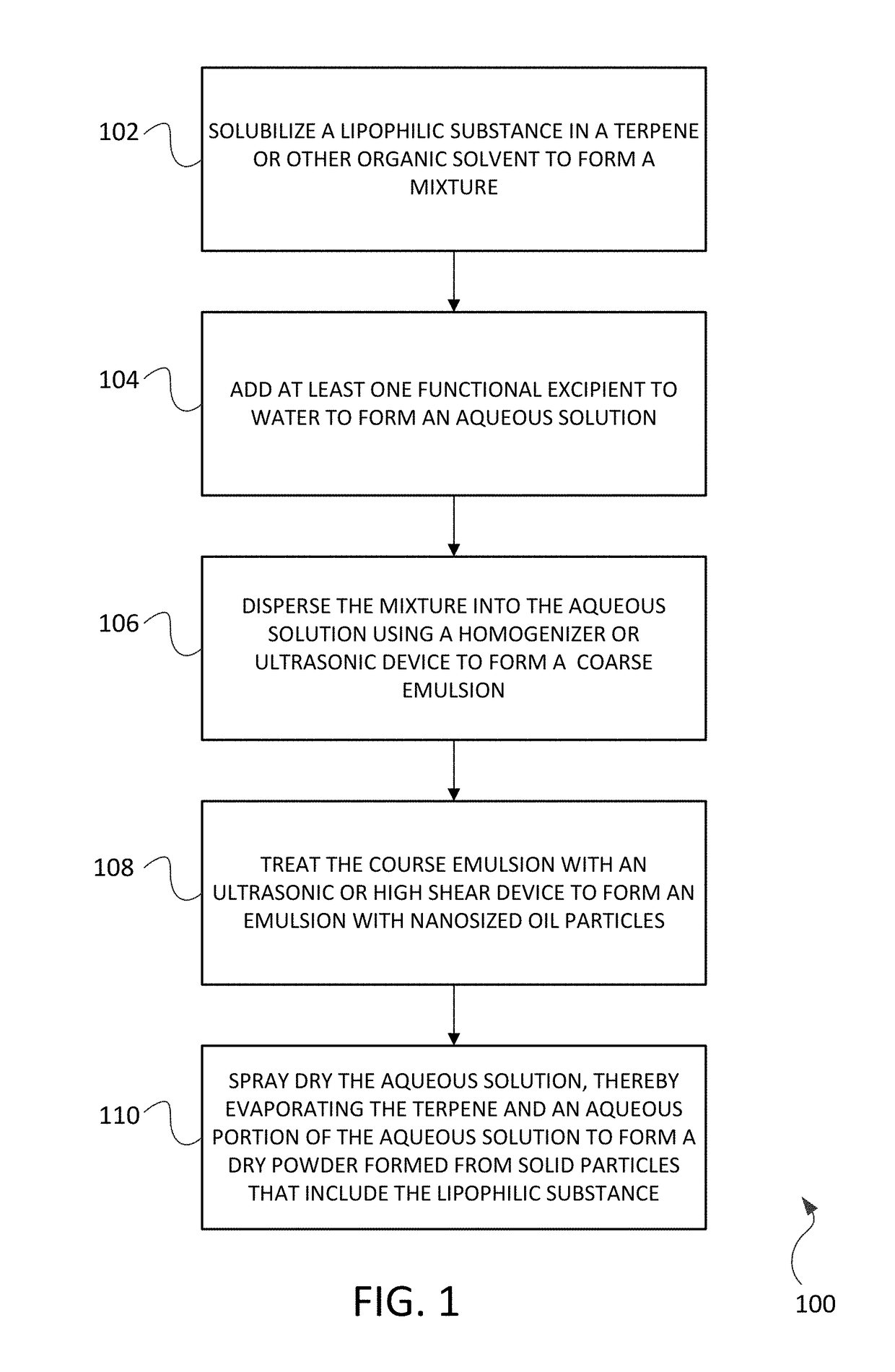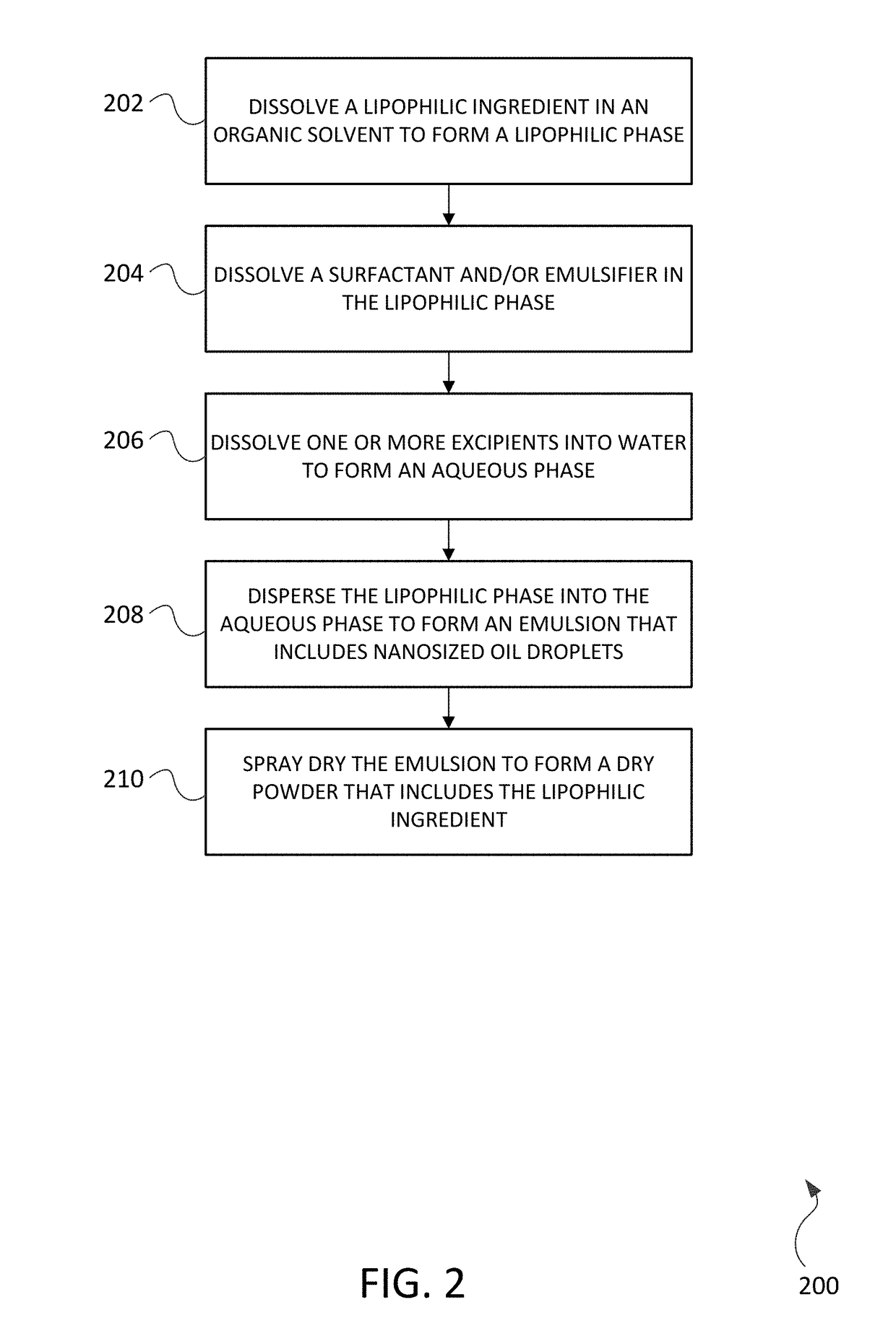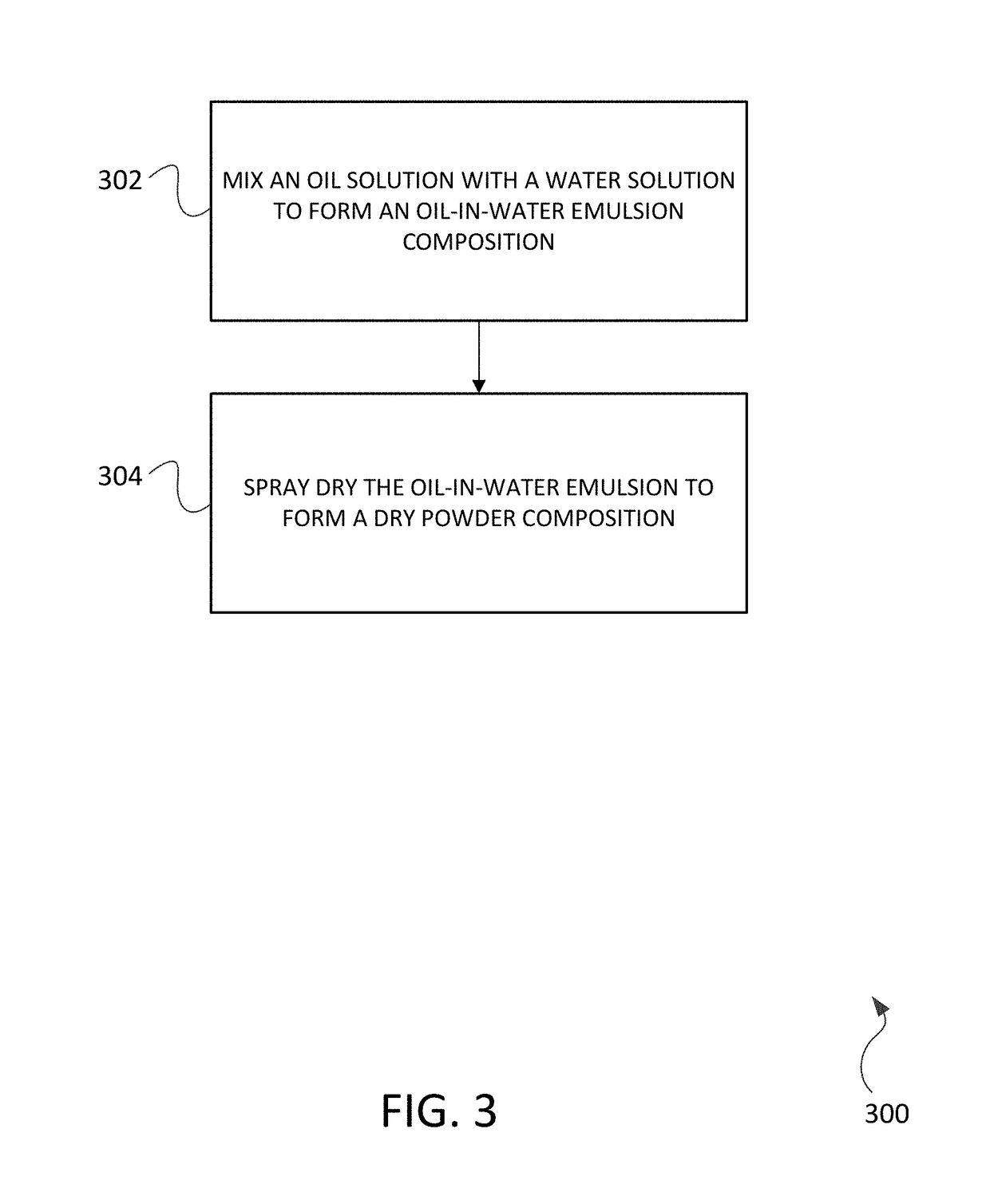Encapsulation of lipophilic ingredients in dispensible spray dried powders suitable for inhalation
a technology of lipophilic ingredients and spray dried powders, which is applied in the direction of immunological disorders, metabolism disorders, extracellular fluid disorders, etc., can solve the problems of poor accurate and precise dosing of drugs delivered via the gi system, poor bioavailability of lipophilic active substances, and difficult encapsulation of lipophilic drug substances into dry, flowable, and dispersibl
- Summary
- Abstract
- Description
- Claims
- Application Information
AI Technical Summary
Benefits of technology
Problems solved by technology
Method used
Image
Examples
example 1
[0064]An annex solution (feedstock) for spray drying into dry powder was prepared in two portions: a lipophilic phase preparation and an aqueous phase preparation. The preparation of the lipophilic phase involved dissolving a lipophilic active ingredient (hops oil extract) into an organic solvent (d-limonene) followed by dissolving a surfactant (emulsifier) into the lipophilic / solvent mixture. The aqueous phase preparation involved selecting excipients (e.g. amino acids, carbohydrates, disaccharides, oligosaccharides, cellulose) and dissolving these excipients into water at or near 20° C., or at higher temperatures depending on excipient solubility.
[0065]The lipophilic phase preparation was dispersed into the aqueous phase preparation to form an emulsion 400 that includes nanosized oil droplets 402 distributed within aqueous phase preparation 404 as shown in FIG. 4. The majority of oil droplets 402 ranged between about 0.01 nm and 0.3 nm. The particle size distribution for the oil d...
example 2
[0067]As in Example 1, an annex solution (feedstock) for spray drying into dry powder was prepared in two portions: a lipophilic phase preparation and an aqueous phase preparation. The preparation of the lipophilic phase involved dissolving a lipophilic active ingredient into an organic solvent followed by adding a surfactant (emulsifier) into the lipophilic / solvent mixture. The aqueous phase preparation involved selecting excipients (e.g. amino acids, carbohydrates, disaccharides, oligosaccharides, cellulose, acids) and dissolving these excipients into water at or near 20° C., or at higher temperatures depending on excipient solubility.
[0068]The aqueous and lipophilic preparations were heated to between about 60° C. and 70° C. The lipophilic phase preparation was then dispersed into the aqueous phase preparation to form an emulsion 400 that includes nanosized oil droplets 402 distributed within aqueous phase preparation 404. The majority of oil droplets 402 ranged between about 0.0...
example 3
[0070]Dry powder cannabinoid compositions suitable for pulmonary delivery were produced using a spray dryer at high yield (80-90%) and at 5 g batch sizes. These powders exhibited very good aerosol performance when actuated via the RS01 inhaler (Plastiape, Italy) as evidenced by mean DE of 68% and fine FPF of 83% as determined by Anderson Cascade Impactor (ACI). Particle size distribution for two batches of spray dried powder is depicted in FIG. 6. The particle size distribution included the following values for the first batch: D10 (um)=0.9; D50 (um)=2.1; and D90 (um)=4.6. The particle size distribution included the following values for the second batch: D10 (um)=0.8; D50 (um)=1.9; and D90 (um)=4.1. Particle size distribution was very consistent across the two batches. A scanning electron micrograph showing particle appearance is shown in FIG. 7.
[0071]Ingredients for producing a dry powder composition having approximately 6.4% by weight cannabinoid active ingredient include leucine ...
PUM
| Property | Measurement | Unit |
|---|---|---|
| mass median aerosol diameter | aaaaa | aaaaa |
| mass median aerosol diameter | aaaaa | aaaaa |
| droplet size d50 | aaaaa | aaaaa |
Abstract
Description
Claims
Application Information
 Login to View More
Login to View More - R&D
- Intellectual Property
- Life Sciences
- Materials
- Tech Scout
- Unparalleled Data Quality
- Higher Quality Content
- 60% Fewer Hallucinations
Browse by: Latest US Patents, China's latest patents, Technical Efficacy Thesaurus, Application Domain, Technology Topic, Popular Technical Reports.
© 2025 PatSnap. All rights reserved.Legal|Privacy policy|Modern Slavery Act Transparency Statement|Sitemap|About US| Contact US: help@patsnap.com



